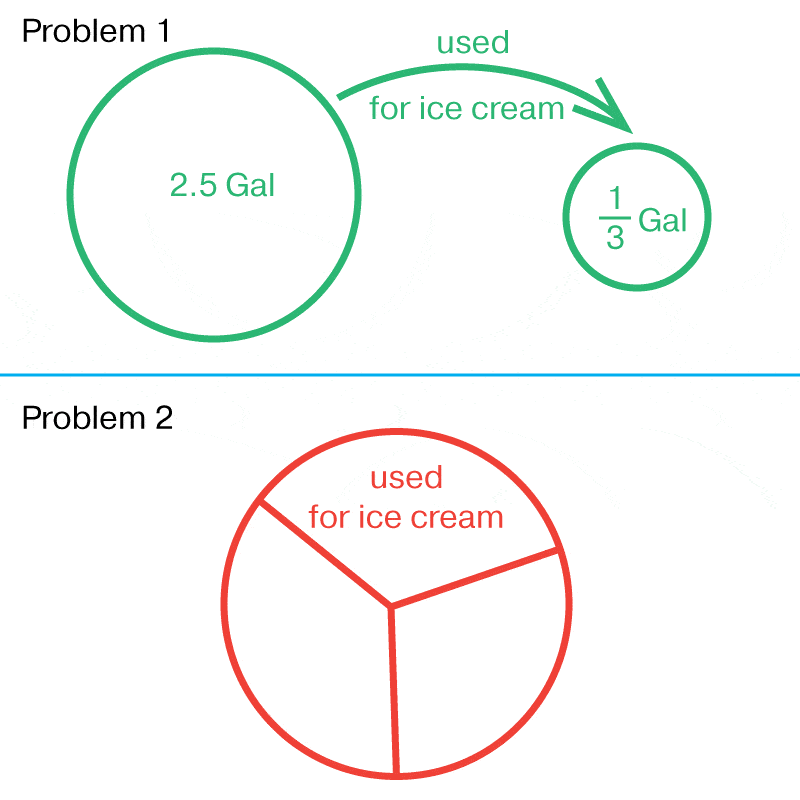Author
Math Country
Share
Author
Math Country
Share
Add Fractions with Like Denominators
Fractions comprise a numerator and a denominator. Also, when two fractions have the same number in the denominator, it is identified as a common or like denominator. Let’s see how to add fractions with the same denominator.
Adding fractions to each other when they have a common denominator is easy, as you can add all the numerators to each other! The new fraction will undoubtedly have the same original common denominator, so all you have to worry about is adding numbers above the line. The same applies to subtracting fractions that have common denominators. The task gets a little more complicated when the fractions don’t have the same common denominator, but still, it is possible to add or subtract them. In this case, you have to find the common denominator.
Adding Fractions With Common Denominators
You need to follow the steps from the list:
1. Recognize the numerator and denominator.
2. Identify the denominator.
3. Locate the numerators.
4. Add the numerators.
5. Rewrite the fraction with the new numerator.
6. Solve the fraction if needed.
7. Reduce the fraction if you can.
8. Transform improper fractions to mixed numbers if applied.
Recognize the Numerator and Denominator
All fractions have two parts: the number above the line (numerator) and the number below the line (denominator). The denominator shows the number of equal pieces the whole was divided into. The numerator tells how many of these pieces are taken.
* In the fraction 1/2, for example, the numerator is 1, the denominator is 2, and the fraction is one-half.
Identify the Denominator
When two or more fractions have a common denominator, they all have the same number in the denominator or represent a whole broken into the same number of parts. To summarize, fractions with a common denominator are elementary, and the resulting fraction will necessarily have the same common denominator as the original fractions.
For example:
- The fractions 4/5 and 3/5 have a common denominator of 5.
- The fractions 3/8, 5/8, and 17/8 have a common denominator of 8.
Locate the Numerators
To add fractions to each other when they have a common denominator, you sum up all the numerators and rewrite the sum over the original denominator.
- In fractions 4/5 and 3/5, the numerators are 4 and 3.
- The numerators in fractions 3/8, 5/8, and 17/8 are 3, 5, and 17.
Add the Numerators
- In the example 4/5 + 3/5 add the numerators 4 + 3 = 7.
- In the example 3/8 + 5/8 + 17/8 add the numerators 3 + 5 + 17 = 25.
Rewrite the Fraction with the New Numerator
Remember to use the same common denominator. The size of components remains the same, and you’re just adding the number of individual elements.
- Fractions 3/5 + 2/5 = 5/5
- Fractions 3/8 + 5/8 + 17/8 = 25/8
Solve the Fraction if Needed
Often, it is possible to represent a fraction more straightforwardly. You need to divide a numerator by a denominator. For example, instead of a fraction 5/5, you can use the number 1. When the numerator and denominator are the same, the fraction always equals 1.
Think of it like an apple divided into three parts. If you eat all three pieces of the apple, you have eaten one whole apple.
You can transform any fraction by dividing the numerator by the denominator. As a result, you usually get a decimal number. For example, you can convert a fraction 5/8 into its decimal form: 5 ÷ 8, which is 0.625.
Reduce the Fraction if You Can
You have to represent a fraction in the simplest form. The simplest form is when the numerator and denominator do not have any common factor.
For example, in the fraction 3/6, the numerator and denominator have a common factor of 3, meaning they can be divided by 3. Therefore, the fraction 3/6 can be taken as 3 ÷ 3/ 6 ÷ 3 = 1/2.
Transform Improper Fractions to Mixed Numbers if Needed
When a fraction has a numerator greater than the denominator, such as 25/8, it is said to be an improper fraction (conversely, when the numerator is less than the common denominator, it is a proper fraction). It would be best if you modified it to a mixed number. A Mixed Number is a number that consists of a whole number and a fraction part.
To convert an improper fraction, such as 25/8, to a mixed number, you:
- Divide the numerator of the improper fraction by its denominator to find out exactly how many whole numbers 8 are in 25, where the answer is 25 ÷ 8 = 3 (0.125).
- Establish what’s left. If 8 x 3 = 24, subtract that from the original numerator: 25 – 24 = 1, where the difference would be the new numerator.
- Convert into a mixed number. The denominator stays the same as in the original fraction, meaning you can rewrite 25/8 as 3 1/8.
Want to know how to subtract fractions with the same denominators? Continue Reading.
Practice adding and subtracting fractions with Fractions Worksheets grades 2-3
Solve real-life fractions word problems with Fractions, Time, and Logic Worksheets for grades 2-3
Stay in the loop







